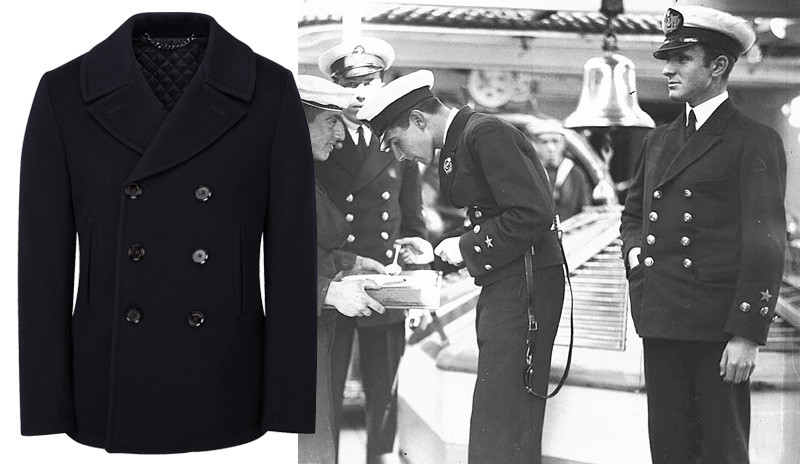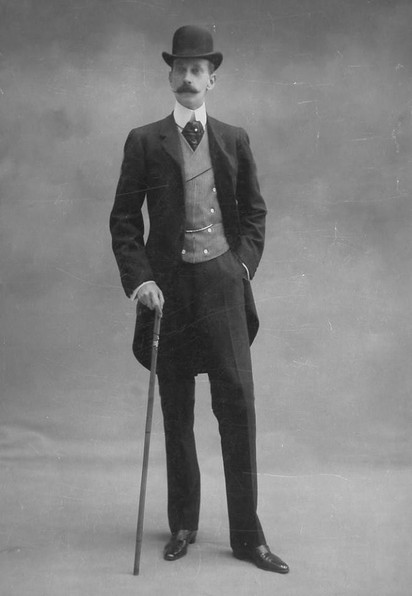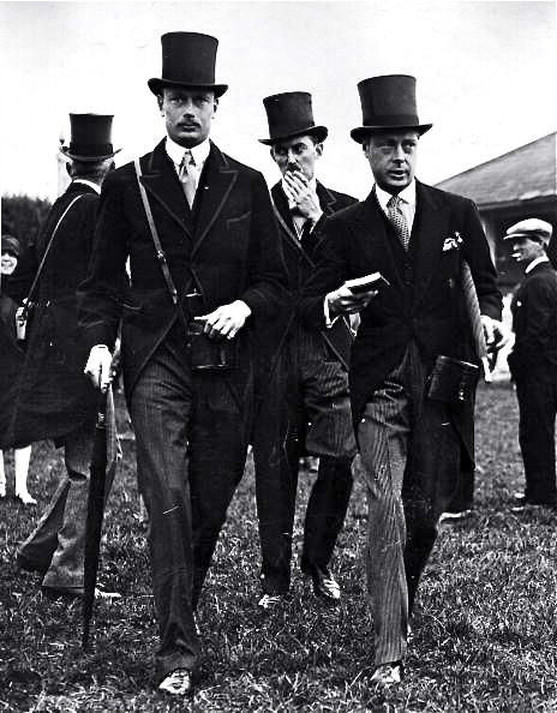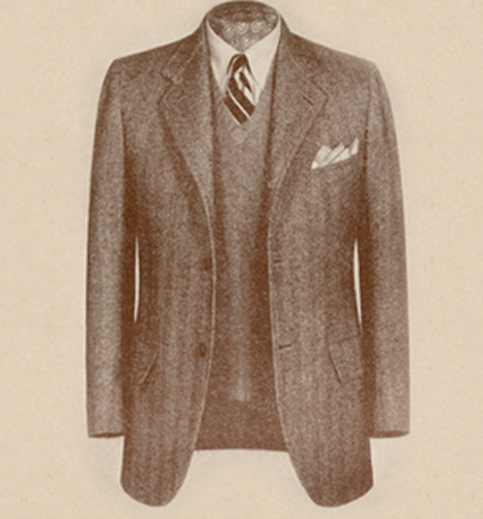First Installment of Three by Mark Rykken
The double breasted jacket that we’ve come to know today has changed very little since the 1920’s and 1930’s. Prior to that, the only double breasted designs still being worn (other than the vest) were the Frock Coat and the Naval Reefer Jacket. The Reefer Jacket adorned with gold buttons and epaulettes was essentially the officer’s version of the Pea Coat. Although influenced by both the Reefer Jacket and the Frock Coat, the modern double breasted coat owes the majority of its design to the Reefer Jacket. (As a historical aside, the Reefer Jacket is referenced in literature as far back as the early 18th Century.) The Frock Coat was still very popular well into the second decade of the last century, but as the 1920’s approached, a new trend in menswear was taking shape.


L to R – Naval Reefer Jacket (source crombie.co.uk) and Frock Coat (source – Lilyabsinthe.com)
The Frock Coat, the standard for formal day-time wear since the mid-1700’s was beginning to give way to the Morning Coat for more formal occasions and to the shorter Ivy League Sack Suit for business wear. It was only the older and more conservative men that were still wearing the double breasted Frock Coat. The result of this trend was that the single breasted Sack suit would become the most popular selling suit model throughout the 1920’s. However, single breasted dominance was about to end when, in the early 1930’s, a suit design from across the pond was introduced: the London Drape. Although this new drape model came in both single and double breasted configurations, it was the double breasted model that best showed off its unique design attributes.


L to R – Morning Coat (source – Pinterest) and Brooks Brothers Sack Suit (source – keikari.com)
The drape cut was originally invented in the late 1900’s by a man named Frederick Scholte, the then-Prince of Wales’ (later known as the Duke of Windsor) personal tailor from 1919-1949. Up to that time, the drape cut had only been available through two Savile Row tailoring firms: Scholte himself and Anderson and Sheppard. It wasn’t a surprise that Anderson and Sheppard had adopted a version of Scholte’s drape design, since in the early 1900’s, Peter Anderson had apprenticed under Scholte and therefore, quite naturally would have been influenced by Scholte’s design ideas. It would take nearly 10 years before the drape cut would make it to the off-the-peg market.
As opposed to the boxy Sack Suit, the London Drape cut, in single or double breasted form, had a more masculine and elegant appearance. The cut was defined by lightly padded shoulders, high armholes, a slightly generous sleeve at the bicep, a draped chest and blade and a defined waist. Softly constructed for ease of movement, the overall effect was to provide a masculine, athletic appearance. Because of the Duke’s public visibility, it was not long before every style-conscious man, from the highest levels of society to the average working Joe, was adorning himself in elegant double breasted swathing. Thus began America’s love affair with everything having to do with the Duke of Windsor, in large part due to a conscious effort by British merchants to commercialize Windsor’s clothes, as Windsor himself remarks upon in his memoirs.
Visit our blog weekly for more installments of The History of the Double Breasted Suit and other men’s fashion insights.
